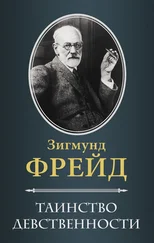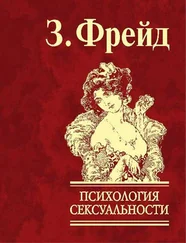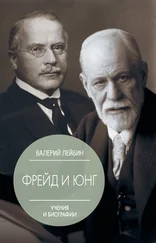Зигмунд Фрейд - Totem and Taboo
Здесь есть возможность читать онлайн «Зигмунд Фрейд - Totem and Taboo» весь текст электронной книги совершенно бесплатно (целиком полную версию без сокращений). В некоторых случаях можно слушать аудио, скачать через торрент в формате fb2 и присутствует краткое содержание. Год выпуска: 2014, Издательство: epubBooks Classics, Жанр: Психология, на английском языке. Описание произведения, (предисловие) а так же отзывы посетителей доступны на портале библиотеки ЛибКат.
- Название:Totem and Taboo
- Автор:
- Издательство:epubBooks Classics
- Жанр:
- Год:2014
- ISBN:нет данных
- Рейтинг книги:3 / 5. Голосов: 1
-
Избранное:Добавить в избранное
- Отзывы:
-
Ваша оценка:
- 60
- 1
- 2
- 3
- 4
- 5
Totem and Taboo: краткое содержание, описание и аннотация
Предлагаем к чтению аннотацию, описание, краткое содержание или предисловие (зависит от того, что написал сам автор книги «Totem and Taboo»). Если вы не нашли необходимую информацию о книге — напишите в комментариях, мы постараемся отыскать её.
Totem and Taboo — читать онлайн бесплатно полную книгу (весь текст) целиком
Ниже представлен текст книги, разбитый по страницам. Система сохранения места последней прочитанной страницы, позволяет с удобством читать онлайн бесплатно книгу «Totem and Taboo», без необходимости каждый раз заново искать на чём Вы остановились. Поставьте закладку, и сможете в любой момент перейти на страницу, на которой закончили чтение.
Интервал:
Закладка:
Psychoanalysis here confirms what the pious were wont to say, that we are all miserable sinners. How then shall we explain the unexpected nobility of the neurosis which fears nothing for itself and everything for the beloved person? Psychoanalytic investigation shows that this nobility is not primary. Originally, that is to say at the beginning of the disease, the threat of punishment pertained to one’s own person; in every case the fear was for one’s own life; the fear of death being only later displaced upon another beloved person. The process is somewhat complicated but we have a complete grasp of it. An evil impulse—a death wish—towards the beloved person is always at the basis of the formation of a prohibition. This is repressed through a prohibition, and the prohibition is connected with a certain act which by displacement usually substitutes the hostile for the beloved person, and the execution of this act is threatened with the penalty of death. But the process goes further and the original wish for the death of the beloved other person is then replaced by fear for his death. The tender altruistic trait of the neurosis therefore merely compensates for the opposite attitude of brutal egotism which is at the basis of it. If we designate as social those emotional impulses which are determined through regard for another person who is not taken as a sexual object, we can emphasize the withdrawal of these social factors as an essential feature of the neurosis, which is later disguised through overcompensation.
Without lingering over the origin of these social impulses and their relation to other fundamental impulses of man, we will bring out the second main characteristic of the neurosis by means of another example. The form in which taboo manifests itself has the greatest similarity to the touching phobia of neurotics, the Délire de toucher . As a matter of fact this neurosis is regularly concerned with the prohibition of sexual touching and psychoanalysis has quite generally shown that the motive power which is deflected and displaced in the neurosis is of sexual origin. In taboo the forbidden contact has evidently not only sexual significance but rather the more, general one of attack, of acquisition and of personal assertion. If it is prohibited to touch the chief or something that was in contact with him it means that an inhibition should be imposed upon the same impulse which on other occasions expresses itself in suspicious surveillance of the chief and even in physical ill–treatment of him before his coronation (see above). Thus the preponderance of sexual components of the impulse over the social components is the determining factor of the neurosis. But the social impulses themselves came into being through the union of egotistical and erotic components into special entities.
From this single example of a comparison between taboo and compulsion neurosis it is already possible to guess the relation between individual forms of the neurosis and the creations of culture, and in what respect the study of the psychology of the neurosis is important for the understanding of the development of culture.
In one way the neuroses show a striking and far–reaching correspondence with the great social productions of art, religion and philosophy, while again they seem like distortions of them. We may say that hysteria is a caricature of an artistic creation, a compulsion neurosis, a caricature of a religion, and a paranoic delusion, a caricature of a philosophic system. In the last analysis this deviation goes back to the fact that the neuroses are asocial formations; they seek to accomplish by private means what arose in society through collective labour. In analysing the impulse of the neuroses one learns that motive powers of sexual origin exercise the determining influence in them, while the corresponding cultural creations rest upon social impulses and on such as have issued from the combination of egotistical and sexual components. It seems that the sexual need is not capable of uniting men in the same way as the demands of self preservation; sexual satisfaction is in the first place the private concern of the individual.
Genetically the asocial nature of the neurosis springs from its original tendency to flee from a dissatisfying reality to a more pleasurable world of phantasy. This real world which neurotics shun is dominated by the society of human beings and by the institutions created by them; the estrangement from reality is at the same time a withdrawal from human companionship.
Chapter III
Animism, Magic and the Omnipotence of Thought
It is a necessary defect of studies which seek to apply the point of view of psychoanalysis to the mental sciences that they cannot do justice to either subject. They therefore confine themselves to the rôle of incentives and make suggestions to the expert which he should take into consideration in his work. This defect will make itself felt most strongly in an essay such as this which tries to treat of the enormous sphere called animism [90] The necessary crowding of the material also compels us to dispense with a thorough bibliography. Instead of this the reader is referred to the well–known works of Herbert Spencer, J. G. Frazer, A. Lang, E. B. Tylor and W. Wundt, from which all the statements concerning animism and magic are taken. The independence of the author can manifest itself only in the choice of the material and of opinions.
.
Animism in the narrower sense is the theory of psychic concepts, and in the wider sense, of spiritual beings in general. Animatism, the animation theory of seemingly inanimate nature, is a further subdivision which also includes animatism and animism. The name animism, formerly applied to a definite philosophic system, seems to have acquired its present meaning through E. B. Tylor [91] E. B. Tylor, Primitive Culture , Vol. I, p. 425, fourth ed., 1903. W. Wundt, Myth and Religion , Vol. II, p. 173, 1906.
.
What led to the formulation of these names is the insight into the very remarkable conceptions of nature and the world of those primitive races known to us from history and from our own times. These races populate the world with a multitude of spiritual beings which are benevolent or malevolent to them, and attribute the causation of natural processes to these spirits and demons; they also consider that not only animals and plants, but inanimate things as well are animated by them. A third and perhaps the most important part of this primitive ‘nature philosophy’ seems far less striking to us because we ourselves are not yet far enough removed from it, though we have greatly limited the existence of spirits and to–day explain the processes of nature by the assumption of impersonal physical forces. For primitive people believe in a similar ‘animation’ of human individuals as well. Human beings have souls which can leave their habitation and enter into other beings; these souls are the bearers of spiritual activities and are, to a certain extent, independent of the ‘bodies’. Originally souls were thought of as being very similar to individuals; only in the course of a long evolution did they lose their material character and attain a high degree of ‘spiritualization’ [92] Wundt l.c. , Chapter IV: Die Seelenvorstellungen .
.
Most authors incline to the assumption that these soul conceptions are the original nucleus of the animistic system, that spirits merely correspond to souls that have become independent, and that the souls of animals, plants and things were formed after the analogy of human souls.
How did primitive people come to the peculiarly dualistic fundamental conceptions on which this animistic system rests? Through the observation, it is thought, of the phenomena of sleep (with dreams) and death which resemble sleep, and through the effort to explain these conditions, which affect each individual so intimately. Above all, the problem of death must have become the starting point of the formation of the theory. To primitive man the continuation of life—immortality—would be self–evident. The conception of death is something accepted later, and only with hesitation, for even to us it is still devoid of content and unrealizable. Very likely discussions have taken place over the part which may have been played by other observations and experiences in the formation of the fundamental animistic conceptions such as dream imagery, shadows and reflections, but these have led to no conclusion [93] Compare, besides Wundt and H. Spencer and the instructive article in the Encyclopedia Britannica , 1911 ( Animism, Mythology , and so forth).
.
Интервал:
Закладка:
Похожие книги на «Totem and Taboo»
Представляем Вашему вниманию похожие книги на «Totem and Taboo» списком для выбора. Мы отобрали схожую по названию и смыслу литературу в надежде предоставить читателям больше вариантов отыскать новые, интересные, ещё непрочитанные произведения.
Обсуждение, отзывы о книге «Totem and Taboo» и просто собственные мнения читателей. Оставьте ваши комментарии, напишите, что Вы думаете о произведении, его смысле или главных героях. Укажите что конкретно понравилось, а что нет, и почему Вы так считаете.






